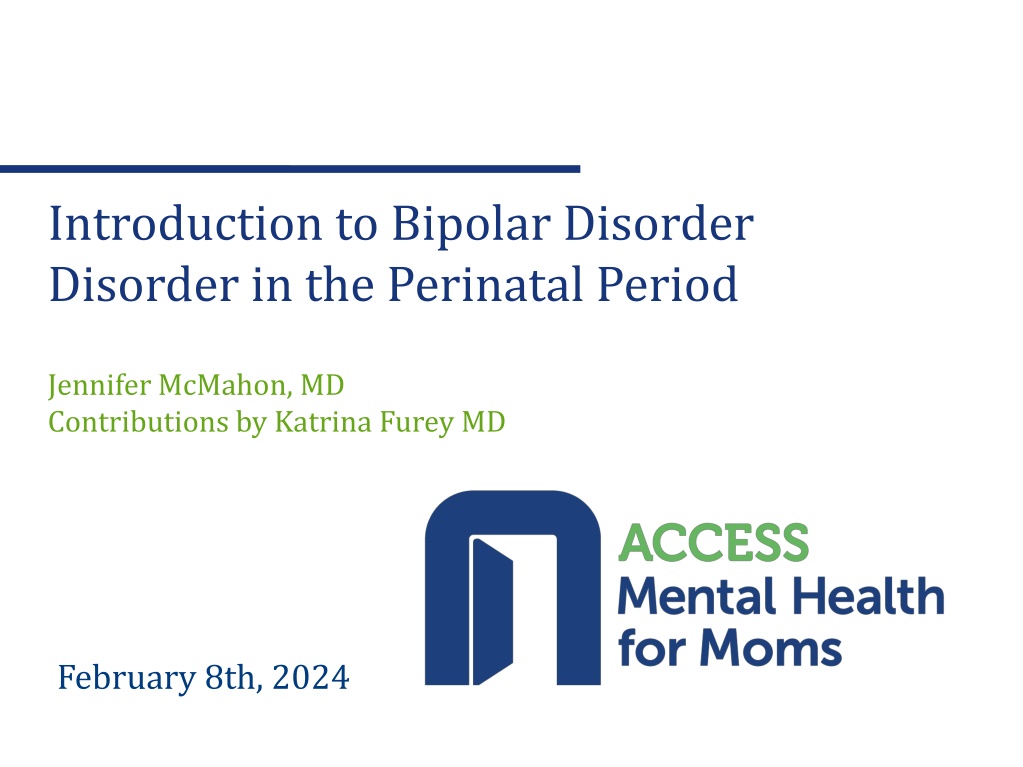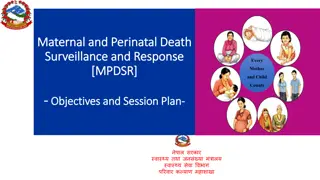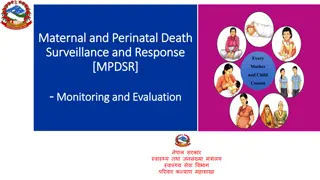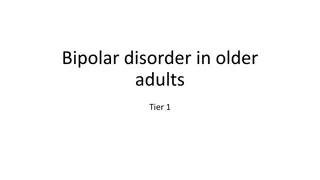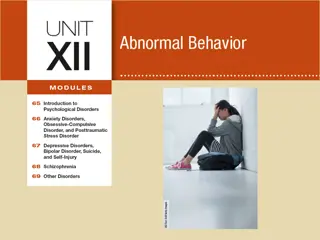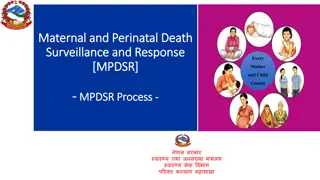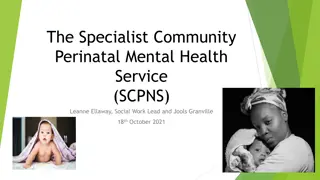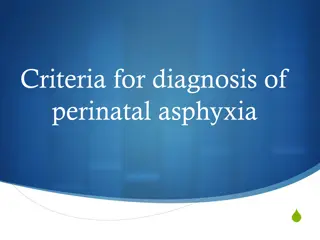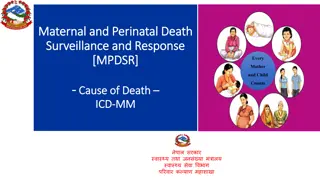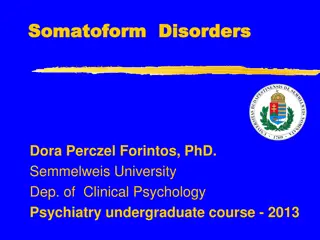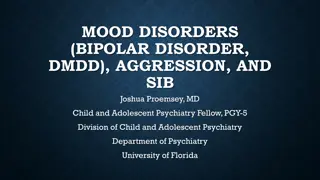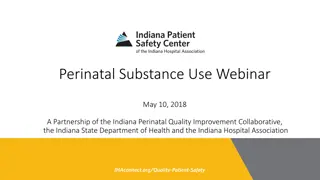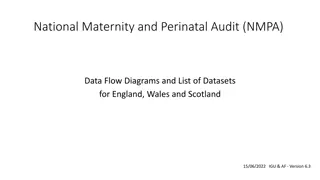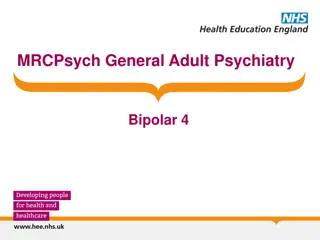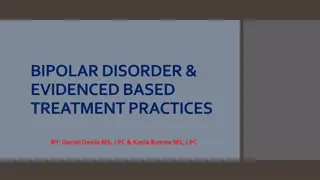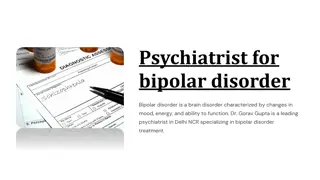Understanding Bipolar Disorder in the Perinatal Period
Jennifer McMahon, MD, presents insightful information on bipolar disorder in the perinatal period, covering epidemiology, diagnosis, screening, and management strategies. The presentation delves into the lifetime prevalence, subtypes, symptoms of mania and hypomania, and the key differences between hypomania and mania. Additionally, it emphasizes the importance of recognizing and addressing bipolar disorder as a significant risk factor.
Download Presentation

Please find below an Image/Link to download the presentation.
The content on the website is provided AS IS for your information and personal use only. It may not be sold, licensed, or shared on other websites without obtaining consent from the author. Download presentation by click this link. If you encounter any issues during the download, it is possible that the publisher has removed the file from their server.
E N D
Presentation Transcript
Introduction to Bipolar Disorder Disorder in the Perinatal Period Jennifer McMahon, MD Contributions by Katrina Furey MD February 8th, 2024
2 No conflicts to report
3 Bipolar Disorder Epidemiology Diagnosis Screening Management
4 Epidemiology Lifetime prevalence of bipolar spectrum disorder of 2.4% Disorder characterized by discrete episodes of depression, hypomania, and mania Data from the World Mental Health Survey Initiative Merikangas et al., 2011
5 Bipolar Disorder Subtypes Bipolar I one lifetime manic episode; usually also experience hypomania & major depressive episodes Bipolar II at least 1 hypomanic episode + at least 1 depressive episode; 0 manic episodes Some patients have mixed episodes with features of depression and hypomania/mania Call AMH for Moms: 833-978-6667
6 Mania and Hypomania A period of elevated, expansive, or irritable mood and increased energy and activity with 3 or more symptoms: Inflated self-esteem or grandiosity Decreased need for sleep More talkative than usual Flight of ideas or racing thoughts Distractibility Increase in goal-directed activity Excessive involvement in activities with high risk for painful consequences (ex: buying sprees, sexual indiscretions)
7 Hypomania vs Mania o Hypomania lasts 4+ days o less severe & does not cause marked impairment in social, occupational or personal functioning o does not necessitate hospitalization o No psychotic features o Mania lasts 7+ days o causes severe functional impairment o necessitates hospitalization o or there are psychotic features Call AMH for Moms: 833-978-6667
8 Bipolar I, Bipolar II, MDD Call AMH for Moms: 833-978-6667
9 Bipolar disorder is the greatest risk factor for .
10 Postpartum psychosis Some women are ultimately found to have bipolar disorder after experiencing an initial episode of psychosis in the postpartum period (Bergink et al., 2016; Wesseloo et al., 2016).
11 Postpartum psychosis General onset 3 -10 days postpartum Prodromal symptoms: insomnia, mood fluctuation, anxiety, irritability Mood disturbances: manic, mixed, depressed mood episodes Psychotic symptoms: delusions (often but not always about infant), auditory hallucinations, disorganization Delirium-like waxing and waning of cognition and confusion Psychiatric emergency: 5% risk of suicide 4% risk of infanticide
12 Postpartum Psychosis: Clinical Presentation General onset 3 -10 days postpartum Prodromal symptoms: insomnia, mood fluctuation, anxiety, irritability Mood disturbances: manic, mixed, depressed mood episodes Psychotic symptoms: delusions (often but not always about infant), auditory hallucinations, disorganization Delirium-like waxing and waning of cognition and confusion Psychiatric emergency: 5% risk of suicide 4% risk of infanticide
13 Bipolar Disorder Onset of symptoms is often during reproductive years Women in the perinatal period who report depressive symptoms should be carefully assessed for bipolar disorder. In a study that screened women for postpartum depression, about 1 in 5 women were found to have bipolar disorder (Tondo et al., 2010 (Wisner et al., 2013).
14 Clues to Diagnosis Family history of bipolar disorder Onset of symptoms during or before adolescence Lack of response to antidepressants or hypomania/activation with treatment with an antidepressant Prior diagnoses of ADHD, disruptive behavior disorders, anxiety disorders History of substance use Frequent episodes Call AMH for Moms: 833-978-6667
15 Bipolar Disorder Assessment o Consists of clinical interview, family history & rating scales like MDQ o Check for underlying medical conditions TSH, B12, vitamin D, Hb/Hct o Differential diagnosis trauma, personality disorders, substance use, psychotic disorder Call AMH for Moms: 833-978-6667
16 o (+) Mania yes to 7+ events in question 1 yes to question 2 moderate to serious in question 3 Call AMH for Moms: 833-978-6667
17 Bipolar Disorder - Treatment o Requires medication management o Typically mood stabilizer +/- atypical antipsychotic o SSRIs can worsen symptoms Call AMH for Moms: 833-978-6667
18 Risk-risk conversation There is no risk free decision! Need to mitigate BOTH: Risks of untreated/undertreated mental illness Risks of treatment
19 Risk of recurrence Pregnancy is NOT protective against a mood episode The risk is greater for those who abruptly discontinued medication compared to gradually tapering the medication Viguera et al, Am J of Psychiatry, 164, 12, 200
20 Risks of untreated bipolar disorder Risks to Mother Increased risk of mood episode Increased risk of postpartum psychosis Decreased prenatal care High risk behaviors (hypersexuality, substance use) Pregnancy complications/Risk to baby: Placental abnormalities Preeclampsia Antepartum hemorrhage Low birth weight preterm birth Neonatal hypoglycemia
21 What medication do I choose? What medication has worked in the past? What has not worked? What are the side effects? Has patient tolerated it before? How much data do we have for the medication? What does the data tell us? What is the patient s preference?
22 Other considerations Use lowest EFFECTIVE dose Maximize non- pharmacologic interventions Avoid polypharmacy Educate everyone patient, family, other providers Try to avoid abrupt discontinuation Try to make changes before pregnancy!
23 Treatment Mood stabilizers
24 Lamotrigine Older data reported increased rate of oral clefts defects, however several other studies and international registries have not found an increased risk of major malformations. Lamotrigine clearance increases throughout pregnancy and therefore typically requires a dose increase. After delivery, clearance rates decline quickly and lamotrigine dosing should be adjusted accordingly (Khan et al., 2016;; Yonkers et al., 2004; Deligiannidis et al., 2014;
25 Lithium Risk for cardiac malformations likely much smaller than initially thought Risk likely dose-dependent, with those taking >900 mg at highest risk Risk of infant diabetes insipidus leading to polyhydramnios Rare association with newborn decreased muscle tone and initial difficultly breathing and feeding Other neonatal complications have been reported: neonatal hyperbilirubinemia, cardiac arrhythmias, hypothyroidism Khan et al., 2016; Deligiannidis et al., 2014; Patorno et al., 2017
26 Monitoring Close monitoring of Li levels throughout pregnancy as clearance of Lithium increases. Check a level anytime the pt is at risk for dehydration (ex: hyperemesis gravidarum, prolonged labor) or has impaired renal function (ex preeclampsia). Regularly monitor of kidney and thyroid function After birth, Li should be reduced due to a quick return to baseline clearance rates following delivery
27 AVOID Valproic acid and Carbamazepine Valproic acid Carbamazepine Given its teratogenicity and neurodevelopmental risks, valproic acid is avoided during pregnancy. Also considered a teratogen with risk of congenital malformations appearing to be dose dependent Neural tube defects, heart defects, and oral clefts Neural tube defects, craniofacial abnormalities, and cardiac and urinary tract defects The risk increases dose- dependently, although the risk of malformations remains with all doses of valproic acid
28 Treatment Antipsychotics
29 Antipsychotics Ex: Typical (first generation) haloperidol, fluphenazine, perphenazine, chlorpromazin e More likely to cause extrapyramidal symptoms Atypical (second generation) More likely to cause metabolic side effects Ex: olanzapine, quetiapine, aripiprazole, risperidone Lieberman and First, 2018
30 Antipsychotics Typical antipsychotics: Some reports of EPS in baby Atypical antipsychotics: Metabolic effects in infant possible Newer atypical antipsychotics unknown (ex: lurasidone) Typical and atypical antipsychotics are unlikely to be major teratogens Risperidone may have slight increased risk for cardiac defects withdrawal symptoms in newborns possible: tremor, difficulty breathing, drowsiness, trouble with feeding, and poor muscle tone. neonatal adaptation syndrome was reduced to a non-significant risk in a study that conducted a match cohort analysis Cohen et al., 2016; Huybrechts et al., 2016; Vigod et al., 2015; (Habermann et al., 2013),
31 Non-pharmacologic methods Promote good sleep Plan for breastfeeding Support system: monitor mood, help with infant Continue maintenance medication Close monitoring Limit stressors such as reducing work hours
32 Call AMH for Moms at 1-833-978-MOMS (6667) Monday-Friday 9:00am-5:00pm https://www.accessmhct.com/moms/ Call AMH for Moms: 833-978-6667
